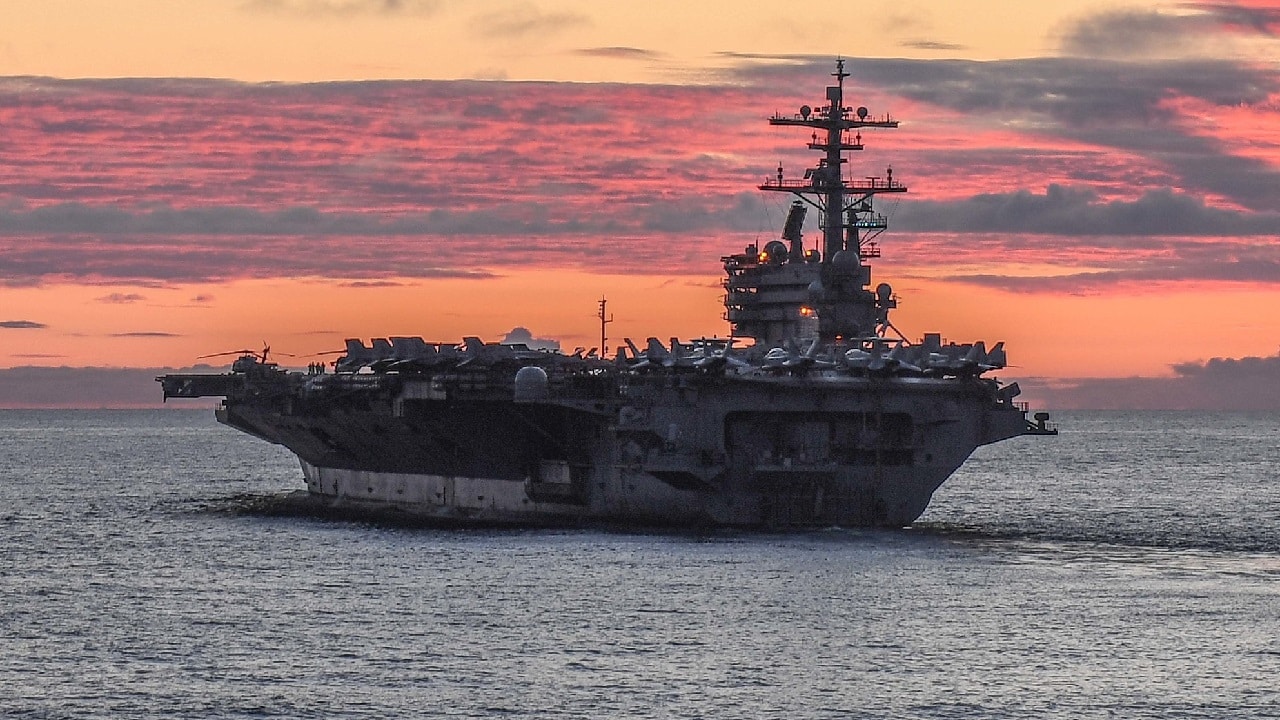Summary and Key Points: Iranian-backed Houthi rebels launched drone and missile attacks against the USS Harry Truman aircraft carrier strike group, but US fighters successfully intercepted all threats.
-In response, the US conducted precision strikes targeting over 30 Houthi military sites, including UAV infrastructure and weapons facilities, inflicting significant damage without civilian casualties.
-The Trump administration has clearly warned Iran of direct responsibility for future attacks, signaling possible direct military action against Iran if provocations continue.
-Historically, Iran backs down under credible threat, making Trump’s deterrence stance impactful. The administration’s message: sustained, intense military responses will persist until attacks on US assets stop completely.
The Houthis Won’t Stop Their Aircraft Carrier Attacks
Iranian-backed Houthi rebels claim to have twice attacked the US Navy’s USS Harry Truman aircraft carrier over the course of the month. United States officials told the Israeli Times Newspaper that indeed attacks were launched and intercepted by US Air Force and Navy Fighter aircraft.
Comments from the Houthi regime claim that the attacks were successful, and that they were launched in response to US strikes on Houthis.
Although the Pentagon has not provided specific confirmation or details related to the nature of the Houthi attack, a US official familiar with the attack did reportedly offer detail to the Times of Israel that, in the first claimed attack, the Houthis did fire drones and at least one missile at the USS Harry Truman.
“The official said that beginning at about midnight Saturday-Sunday local time in Yemen, the Houthis fired 11 drones and at least one missile over about 12 hours. Ten of the drones were intercepted by US Air Force fighter jets and one was intercepted by a Navy F/A-18 fighter jet.
The missile fell into the water far from the ship, and nothing came close to hitting either the carrier or the warships in its strike group,” the Times of Israel reports.
US Strikes on Houthis
Air Force Lt. Gen. Alexus G. Grynkewich, director of operations for the Joint Staff, said Houthi intent can at times seem unclear given the lack of accuracy demonstrated by Houthi missiles.
“Quite frankly, it’s hard to tell because while we’re executing precision strikes, they missed by over 100 miles,” he said. “I would question anything that they claim to the press that they’re doing or not doing. It’s very hard to tell … just based on the level of incompetence they’ve demonstrated,” Grynkewich said in a Pentagon essay.
Grynkewich went on to explain additional detail about the ongoing US strikes against Houthi targets, stating that the initial wave hit more than 30 targets across multiple locations.
The Pentagon report said that Included among those targets were terrorist training sites, unmanned aerial vehicle infrastructure, weapons manufacturing capabilities and weapons storage facilities.
“It also included a number of command-and-control centers, including a terrorist compound where we know several senior Houthi unmanned aerial vehicle experts were located,” Grynkewich said.
As for damage assessment, analysis is still ongoing, however Grynkewich explained that initial indications are that there may be “dozens” of Houthi casualties but no indication of civilian casualties from the US attacks.
The Trump administration and Defense Secretary Hegseth have been quite vocal that intense, lethal precision strikes against the Houthis will continue until attacks on US Navy warships stop.
Iran Escalation
Given the known extent to which Iran supports Houthi rebels and provides them with weapons, President Trump is also being quite clear that the US will hold Iran responsible in the event of continued attacks.
Does this mean that the US might strike Iran in response to additional Houthi attacks? That remains unclear. However the Trump administration has been decisive in its response to the circumstance thus far, so a course of action would likely unfold quickly in the event of continued attacks.
Iran has a history of at least proclaiming “defiance” of the US, however when faced with an extremely credible and realistic threat that their country could be confronted directly by US military power, Iran has a history of ultimately backing down.
This happened years ago during Trump’s prior administration and when faced with the very realistic prospect of a US attack, Iran withdrew its war-like rhetoric and “stopped” attacking US bases in the Middle East.
Therefore, the credibility of Trump’s action regarding potential force against Iran has been proven quite solid, so Iran will in reality need to prepare for the very realistic possibility that the Iranian regime itself and its military assets may be directly targeted by the US.
About the Author: Kris Osborn
Kris Osborn is the Military Technology Editor of 19FortyFive and President of Warrior Maven – Center for Military Modernization. Osborn previously served at the Pentagon as a highly qualified expert in the Office of the Assistant Secretary of the Army—Acquisition, Logistics & Technology. Osborn has also worked as an anchor and on-air military specialist at national TV networks. He has appeared as a guest military expert on Fox News, MSNBC, The Military Channel, and The History Channel. He also has a Masters Degree in Comparative Literature from Columbia University.

